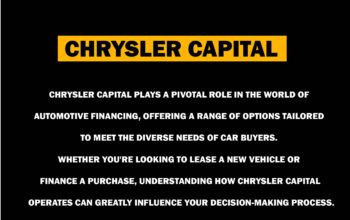How the Limited Cost Trader Test affects flat rate VAT
You may not think about flat rate VAT schemes the moment you wake up. If you are a small business that is VAT registered, you might want to look closer.
A tax on goods and services is known as VAT. VAT-registered firms are required to charge VAT for their sales, and they can claim VAT back on their purchases. It is important to keep careful records of all transactions, including the VAT flat rate charged.
What is the flat rate VAT scheme?
HMRC has a Vat Flat Rate Scheme to help smaller businesses reduce their record-keeping burden. This scheme allows you to pay HMRC only a certain percentage of sales, instead of having to pay HMRC the amount you collected in VAT from your sales less any VAT you have claimed on expenses. Small businesses don’t have to track their VAT purchases.
Learn more about the Vat Flat Rate or Standard Rate of VAT by reading our article “Flat rate or standard?
Why did it change?
The Treasury has cited the growing number of self-employed as a reason for the decline in tax revenues. Our experience and research show that people do not run their own businesses to avoid taxes, but for commercial reasons. The Treasury thought that these VAT schemes were overly generous and too many companies were using them.
What is the Limited cost Trader flat rate VAT scheme?
Since April 2017, many businesses that are purely labour-based, like contractors, have been required to use a flat rate of 16.5%. The Vat Flat Rate scheme was increased to a higher rate, which reduced the benefits of flat rate over standard rate. Speak to your accountant who can advise you on the best VAT scheme. You may even want to deregister if you have a low turnover.
Who is this for?
“Limited Cost Traders” are businesses that only use labour and must pay the 16.5% flat rate VAT. Limited cost traders are defined as businesses that spend less than 2% on the value of their sales (not including services) during the period they submit a tax return.
You cannot include the following purchases in your total amount spent:
- Capital goods (such new equipment for a business)
- Food and Drink (such as Lunches for Staff)
- Vehicles or parts for cars (unless you are running a vehicle hire business).
If the firm spent less than £1,000 during their accounting period, even if it was more than 2% of sales, they are also considered ‘labour only’. The threshold of £1,000 is prorated if your accounting period exceeds or falls below 12 months.
Q&A on the flat rate VAT and the Limited Cost Trader Test
To explain the Limited Cost Trader Test further, we have put together a FAQ based on your questions.
- Can I still claim the 1% VAT discount for the first year when using the flat rate scheme?
- HMRC has confirmed that this service is still available.
- How often must you apply for the Limited Cost Trader Test?
- The limited cost trader test must be applied to each VAT period when using the flat rate scheme.
These tests are incorporated .
- We will review every VAT return we receive from our clients on a regular basis. An accountant will then contact you if they believe you are not a low-cost trader during that particular VAT period.
- Contractors with low expenses are most likely to be affected by the limited cost trader rule. How can contractors keep flat-rate VAT rates and avoid being classified as limited cost traders?
- It depends on if you bought any goods during the VAT period. You’ll need to use the limited-cost trader rate if the goods you bought are less than 2% or £1,000 per year of your turnover.
- My trade is currently classified as printing. The rate for this sector is 8.5%. What are the rules?
- If you are a limited cost trader, your rate will be 16.5%. For the printing industry we expect this trade type to have a large number of “applicable products”. Ink and paper used for printing could be included. For most printers this means the cost of goods is more than 2%, so the rules do not apply.
- You can claim back VAT on items that cost more than £2,000 as a limited-cost trader. I am thinking about buying a new Mac.
- According to the rules, a flat-rate scheme business can claim VAT on purchases that exceed £2,000.
I have a salary, accounting, travel expenses, occasional subsistence costs, software rental and telephone costs. How can I determine if my company expenses currently meet this standard?
You’re likely to be affected. The majority of service-based businesses are likely to be impacted. These are some items that will not be considered as goods.
- Accounting fees
- Costs of advertising
- Renting equipment is a service.
- You or your staff can enjoy a meal at the restaurant.
- Fuel for a vehicle (unless you are in the transport industry and using your own or leased vehicle);
- Laptop or mobile phones used by the business are not included in capital expenditure.
- Any electronic service, such as a magazine downloaded;
- Rent;
- Downloading software
- Software created specifically for you.




